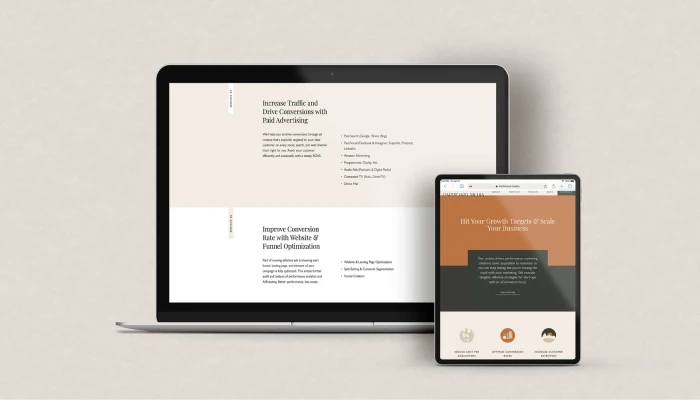Hello!
If you want your customers to be loyal to your brand, you need to transform them into regular shoppers as soon as possible. In this article, we’ll explore various retention strategies and examples that you can use to make sure those customers keep coming back.
1) Invite them to follow you on social media
 It’s hard to expect customers to be able to remember your brand on their own accord. We lead busy lives. But it’s okay to remind them you exist from time-to-time – that’s what people go to social media for.
It’s hard to expect customers to be able to remember your brand on their own accord. We lead busy lives. But it’s okay to remind them you exist from time-to-time – that’s what people go to social media for.
With 45% of the world’s population using social media and 54% of those using it to research a product, people are happy to stay in touch with a brand they like on social media. You just need to give them that opportunity in the first place.
Let your customers know you’re on social media using email signatures, invitations to follow on purchase confirmation pages, and other forms of communication that don’t require critical actions.
2) Ask them to share their purchase
This goes back to one of Cialdini’s 6 Principles of Persuasion: consistency. People like to remain true to the things they have said or done. If someone invests in your product and shares it with someone, they are to interact with, and potentially buy from, your brand again.
Ask your buyers to share their product purchase but don’t just give them the option to share it as a Facebook status or Tweet. Instead, offer your customers the ability to share their purchase via private messaging apps like WhatsApp and Facebook Messenger.
 This lets them share it specifically with friends or acquaintances who will be more likely to be interested in your particular offering. The gesture is more intimate and holds more weight.
This lets them share it specifically with friends or acquaintances who will be more likely to be interested in your particular offering. The gesture is more intimate and holds more weight.
3) Offer an affiliate or referral program
Affiliate or referral programs still work, they just need to be adapted to today’s climate. If you want customers to come back, then make them responsible for the success of your product.
Offer customers the chance to join your affiliate program. Reward their efforts with a commission-based reward in the form of ecommerce store credit and focus on your customer retention.
This tactic will work for acquisition purposes too, as your affiliates will be bringing new customers to your ecommerce store. With 54% of marketers agreeing that referral programs have a lower cost-per-lead than other channels, it’s a win-win situation.
4) Bring quality offers to their inboxes
Email marketing is a powerful tool for ecommerce. By using the right tactics, you can up your chances of open rates, engagement rates, and sales.
 Emails with personalized subject lines can see a 50% higher open rate. Sending three “abandoned cart” or “related products” emails can see up to 69% more orders. Adding interactive content like quizzes or videos can see up to a 300%increase in clicks. Why? Because you’re offering considered, quality content to the reader.
Emails with personalized subject lines can see a 50% higher open rate. Sending three “abandoned cart” or “related products” emails can see up to 69% more orders. Adding interactive content like quizzes or videos can see up to a 300%increase in clicks. Why? Because you’re offering considered, quality content to the reader.
Set email marketing KPIs, use winning tactics, and share relevant content, via video, blogs or gift guides to keep your customer loyal, feeling valued, and returning for more.
5) Focus on storytelling throughout the sales process
Business storytelling is an essential way to build brand loyalty and can help an ecommerce site build trust. In fact, 44% of market leaders recognized storytelling as mandatory for success last year.
By helping your customers relate to your brand, you’ll up your chances of them turning into regulars in the future.
6) Understand what people want with quizzes and more
Quizzes, questionnaires, and surveys can all offer your marketing and sales team huge insight for your ecommerce efforts. There are various ways you can use them:
Content surveys
 Unsure of the content or products your audience will be interested in most? Create a survey and ask them. It’s a surefire way to make people feel appreciated as a customer and to keep them engaged with your brand.
Unsure of the content or products your audience will be interested in most? Create a survey and ask them. It’s a surefire way to make people feel appreciated as a customer and to keep them engaged with your brand.
A digital sales assistant
Help a customer find the perfect product for their needs using a product-based quiz. This quiz can be delivered in a fun and engaging way that helps someone find a product that is tailored to their interests.
This personalized marketing approach will make your shoppers 80% more likely to buy a product you offer with their results.
7) Conversational Marketing strategies
44% of ecommerce buyers say they will make a repeat purchase if their ecommerce experience has been personalized. That’s nearly half of every one-time buyer returning for at least a second purchase.
An easy way of doing this is via conversational marketing. Make someone’s sales journey personal by adding a chat function to their experience. Implement a chatbot, the option to live chat with a rep (if you have the resources), and even video chat.
8) Check in on someone’s buy
 Ecommerce engagement doesn’t always need to be done when someone is in the initial buyer funnel. In fact, there are many ways to increase post-purchase engagement. Think of other ways you can show a customer you care and engage with them in an authentic way, outside of the sales process.
Ecommerce engagement doesn’t always need to be done when someone is in the initial buyer funnel. In fact, there are many ways to increase post-purchase engagement. Think of other ways you can show a customer you care and engage with them in an authentic way, outside of the sales process.
Email or SMS messages to check in on a customer’s purchase can be a huge value to your brand reputation. Show that your brand cares about their experience even after someone has bought from you.
It’s important to not overwhelm your buyer with messaging after they’ve purchased from you, and try not to take too much of a continual sales approach either. A note checking in is often a gesture big enough for them to remember you the next time they need something similar.
9) Give them a positive UX experience
This one is simple and doesn’t require too much strategy. Make sure your website is a pleasant place to be for visitors. This includes both desktop, mobile, and non-screen visitors that are using voice search.
74% of people said they’re more likely to return to a site if it’s optimized for mobile and 50% of all searches are predicted to be with a voice in 2020. Make sure your ecommerce website design is prepared for it all and give visitors a pleasant enough experience that they’re happy to return to your site in the future.
10) Deliver notes with products
 It can be hard creating a real-life experience with an ecommerce store, so maximize the offline opportunities you have.
It can be hard creating a real-life experience with an ecommerce store, so maximize the offline opportunities you have.
You’re able to bring your branding into people’s homes when you deliver your product. Consider ways that you can really showcase that you care, your uniqueness, and make them thankful they went for your product over a competitor’s.
This can be done with your packaging or better yet a small note of thanks that comes with your product. These personal touches and real-world experiences are often more tangible and memorable than what you can deliver online.
11) Offer returning customers discounts or free shipping
This is an easy win for your ecommerce brand. Offer your returning customers extra benefits as a way of saying thank you. Deliver this content with targeted social media ads or organic DMs, web experiences, or email marketing.
Don’t apply time sensitivity to them; these discounts or offers should be in your customer’s own time and are merely a sign of your gratitude.
12) Offer subscription packages
 Subscription packages and monthly or quarterly care packages can be a great way for you to connect with your customers. See if there is a way you can turn your product into a subscription model and keep your customers coming back as their subscription runs out.
Subscription packages and monthly or quarterly care packages can be a great way for you to connect with your customers. See if there is a way you can turn your product into a subscription model and keep your customers coming back as their subscription runs out.
You can consider offering discounted second rounds for subscription renewals, free subscriptions for a certain number of referrals, or combine some of the other tactics we’ve suggested in this article to help your subscription package come to life.
13) “Add it to my calendar”
If it’s not in the calendar, it doesn’t exist. There are simple plugins you can get for your ecommerce site that will allow visitors to add personal or brand-led events to their calendars.
Give your customers the digital reminder that they need to check back in with you. Invite them to add loved one’s birthdays and reminders to grab a gift for them. Or, remind them to add the dates of your sales to their own calendars so they don’t miss the opportunity to shop the sales first.
You’ll be reaching them on a channel that dictates their day-to-day activities, and assigning authority to the action.
14) Build and read wishlists
 Personalized ecommerce shopping cart recommendations influenced 92% of shoppers online. Make sure your personalization is on point with wishlists. Let people build a wishlist on your ecommerce site. This wishlist effectively acts as an abandoned cart for you and them.
Personalized ecommerce shopping cart recommendations influenced 92% of shoppers online. Make sure your personalization is on point with wishlists. Let people build a wishlist on your ecommerce site. This wishlist effectively acts as an abandoned cart for you and them.
Take your connection a step further and offer discounts on those products you know they love throughout their birth month. This is data used in the right way. Deliver something they’re interested in, at a rate they’ll like, during a time they’re looking to treat themselves.
15) Build a community around your product
We’re closing out with community. Communities are business-critical for a lot of products and businesses, especially those in travel and tourism or those that rely on offline experiences. Communities are also difficult to sell or explain unless you’re part of one. It can be hard to list the benefits of having a community.
 However, strong communities are known for supporting, and therefore selling, themselves. Take the burden off your ecommerce site’s shoulders and distribute it among a community that loves and is passionate about your product/s and what it stands for.
However, strong communities are known for supporting, and therefore selling, themselves. Take the burden off your ecommerce site’s shoulders and distribute it among a community that loves and is passionate about your product/s and what it stands for.
In creating a community, you create a hub of self-made brand ambassadors, a portal to UGC and an organic reach within micro-communities.
If you offer your customers a chance to join a community that is thriving, it will keep them engaged with not only your product but like-minded product users as well; this encourages them to return back to your store regularly.
Thank you!
Join us on social media!
See you!






